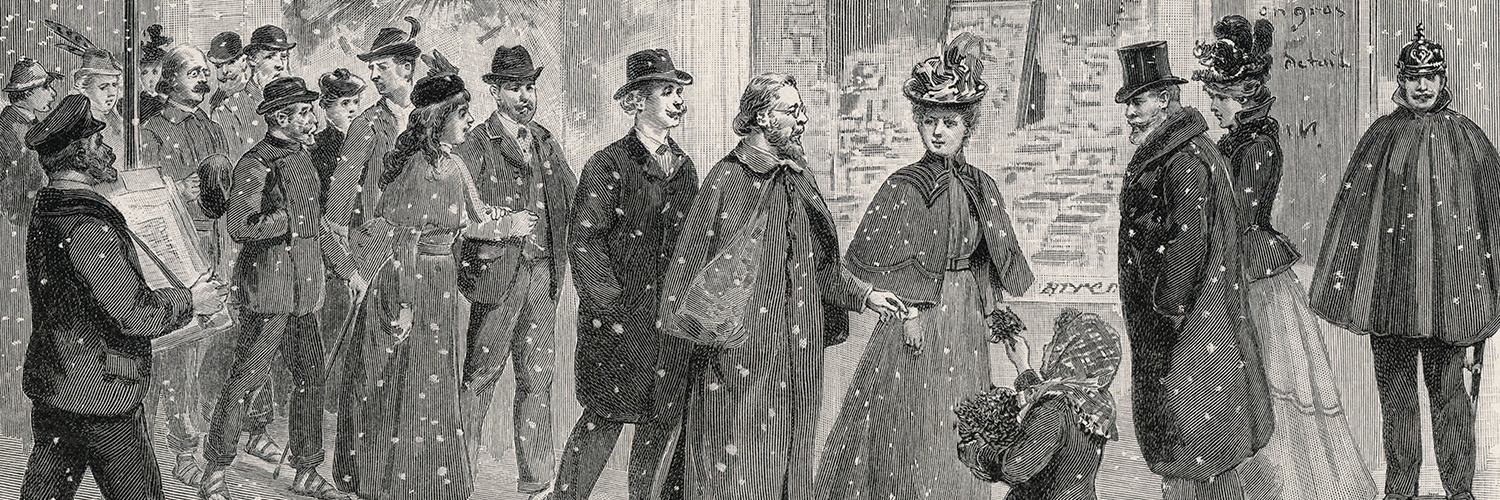Adobe Stock – Archivist
The Adventist Dress Reform: When Ellen White Recommended a New Outfit for Women
By Kai Mester
It was about health, freedom, safety, and a pleasing appearance.
In 1865, Ellen White called on her fellow Adventist women to embrace dress reform.
At the time, fashion for women included cumbersome, heavy hoop skirts, floor-length trailing dresses, and tight, uncomfortable corsets.
The Dress Reform of the Women’s Rights Movement
Starting in 1851, a small movement arose in opposition to this fashion, inspired by Turkish women’s clothing: long trousers worn under a slightly shorter dress. This attire was simply more comfortable, healthier, and practical.
Over time, these garments—often called Bloomers or American Costume—became even shorter, sometimes barely reaching the knee, if at all.
As a result, the general public saw them as either immodest or laughable, despite the long pants worn underneath. Only a minority of women adopted this style, including health-conscious women, feminists, and spiritualists.
A Nuanced Approach
Ellen White recognized the good intentions behind dress reform. She joined the small chorus that criticized mainstream fashion as unhealthy: too heavy, too tight, too long, too elaborate, too showy, prone to accidents—and, surprisingly, lacking trousers, which were essential for proper circulation and general health.
Ellen White explicitly recommended that women wear trousers—though, for aesthetic reasons, in the same color and fabric as the accompanying dress. She proposed a standard Adventist dress pattern with a hemline 9 to 10 inches (23–26 cm) above the ground, which was 4 to 6 inches (10–15 cm) shorter than the prevailing fashion.
At the same time, she recognized the challenges and dangers of the reform movement. The dress reformers had strayed so far from mainstream fashion that they were ridiculed as eccentric and scorned as extremists. They dressed almost like men, which was unacceptable to most American women of the time. Ellen White explained that such a style could not succeed—it would undermine the influence of Adventists in society and provoke rejection.
She also saw the danger that a reform style violating Deuteronomy 22:5 could encourage crime. That verse describes it as an abomination for a woman to wear men’s clothing, or vice versa.
And Today?
That the reform dress was inspired by Turkish women’s clothing shows that definitions of men’s and women’s clothing vary across cultures and eras. This was even more true in Moses’ time. Therefore, the standards of one culture or era can only be applied to one’s own situation with caution. What remains important is a clear visual distinction between male and female through the overall appearance of one’s clothing.
Clothes make the person, as the saying goes. That’s why people take this subject very personally. Ultimately, the Adventist standard dress pattern was not widely adopted—mainly because of the trousers. That seems to remain the case in the Adventist church today. Many prefer knee-length or shorter skirts with bare legs, thereby missing two of the main arguments for dress reform: health and moral protection.
By the standards of her day, Ellen White promoted shorter dresses combined with women’s trousers for health and moral reasons. That’s what made her message revolutionary—though she was a responsible revolutionary.
So how can her recommendations be applied in today’s more colorful society?
How can a woman dress healthfully, tastefully, practically, and attractively?
How can she dress modestly and chastely—concerned for her own safety—while clearly affirming her gender?
And how can she avoid attracting undue attention or ridicule for her clothing?
How can she keep in mind the following advice from the apostle Paul?
“I want women to be modest in their appearance. They should wear decent and appropriate clothing and not draw attention to themselves by the way they fix their hair or by wearing gold or pearls or expensive clothes. For women who claim to be devoted to God should make themselves attractive by the good things they do.”
(1 Timothy 2:9, New Living Translation)
In our individualistic society, every woman must answer these questions for herself. But the woman who feels overwhelmed by them can hold on to the promising and encouraging words of James:
“If any of you lacks wisdom, let him ask of God, who gives to all liberally and without reproach, and it will be given to him. But let him ask in faith, with no doubting.”
(James 1:5–6)
A Word for the Men
In an age of sexualization, where homosexuality is strongly promoted and men are the focus of sensual attention from a wide range of sexual identities, men too should think more carefully about their clothing. How much flesh does modern men’s fashion reveal or hint at? Do believing men wear provocative clothing—perhaps without realizing it? All other clothing principles apply equally to men.
In any case, we must look inward. These are not easy times when it comes to these matters. Patience and compassion with our fellow humans are absolutely essential.
Source: hoffnung-weltweit.info




